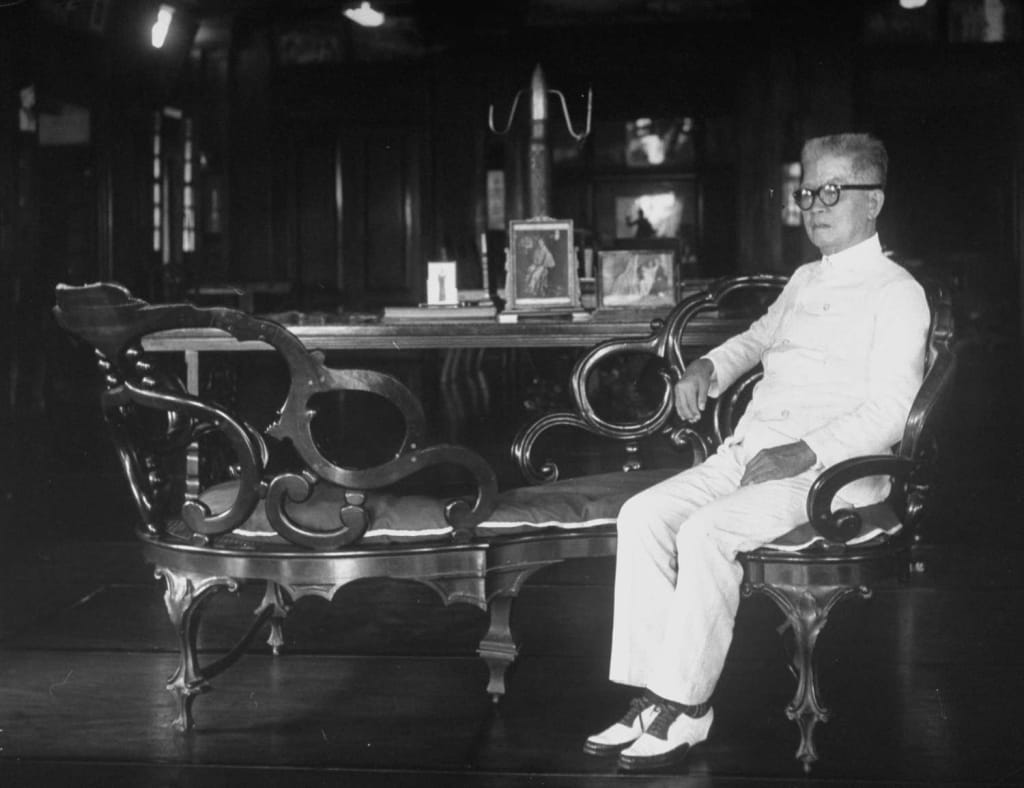The capture of Emilio Aguinaldo by U.S troops in 1901
Aguinaldo was eventually captured by American troops led by Colonel Frederick Funston on March 23, 1901.

Emilio Aguinaldo was born on March 22, 1869, in Kawit, Cavite, Philippines. He was the seventh of eight children of a wealthy family of landowners. Aguinaldo attended school in Manila and later became a member of the Katipunan, a secret society that aimed to overthrow Spanish colonial rule in the Philippines.
In 1896, Aguinaldo became the leader of the Philippine Revolution against Spain and was instrumental in the country's independence from Spain in 1898. However, when the United States took control of the Philippines after the Spanish-American War, Aguinaldo continued his fight for independence against the new colonial power.
Aguinaldo was eventually captured by U.S troops in 1901 and spent several years in exile in Hong Kong. He returned to the Philippines in 1913 and continued to be involved in politics, serving as a senator and later as the president of the Philippine Republic from 1899 to 1901 and again from 1944 to 1945.
Throughout his life, Aguinaldo remained a prominent advocate for Philippine independence and was a key figure in the country's struggle for self-rule. He died in 1964 at the age of 94.
Emilio Aguinaldo was a Filipino revolutionary leader who played a key role in the Philippine-American War. In 1901, he was captured by U.S troops, which marked a significant turning point in the conflict.
Aguinaldo had been leading a guerrilla campaign against the American occupation of the Philippines since 1899. Despite some early successes, his forces were eventually pushed back and he was forced to flee to the mountains. In March 1901, he was tracked down by a detachment of American soldiers, who engaged his bodyguards in a fierce firefight.
Aguinaldo was eventually captured and brought to a military camp in Palanan. He was treated with respect by his captors and given a comfortable room to live in. He was also allowed to continue corresponding with his supporters and family members.
The capture of Aguinaldo was a major blow to the Filipino resistance movement. His capture deprived the rebels of their most charismatic leader and caused many of his followers to lose hope. The Americans used their victory to portray Aguinaldo as a defeated and isolated figure, and to present their own occupation as a necessary and benevolent act.
Despite his capture, the Philippine-American War continued for several more years, with sporadic fighting and guerilla attacks continuing until 1913. Aguinaldo was eventually released in 1903 and went on to live a relatively quiet life, working to promote Filipino independence through peaceful means. He died in 1964 at the age of 94.
Emilio Aguinaldo, like many historical figures, had both supporters and critics, and some accusations have been made against him. Here are a few:
Dictatorship: Some critics accused Aguinaldo of becoming a dictator during his presidency of the Philippine Republic. They claimed that he had used his power to suppress political opposition and to consolidate his own authority.
Collaboration with the Japanese: During World War II, Aguinaldo initially cooperated with the Japanese occupiers of the Philippines, leading some to accuse him of collaboration. However, he later joined the resistance movement against the Japanese.
Assassination of Antonio Luna: Antonio Luna was a general in the Philippine army who was assassinated in 1899. Some have accused Aguinaldo of ordering the assassination, although others dispute this claim.
Betrayal of Andres Bonifacio: Andres Bonifacio was a key leader of the Philippine Revolution against Spain, but he and Aguinaldo had a falling out, and Bonifacio was eventually executed by Aguinaldo's forces. Some have accused Aguinaldo of betraying Bonifacio and of being responsible for his death.
It's worth noting that not all of these accusations are universally accepted, and there is ongoing debate among historians about Aguinaldo's legacy
About the Creator
ynawrites
As a ghostwriter, my purpose is to transform your ideas, visions, and stories into captivating written works. Talented | Imaginative | Versatile | Collaborative | Detail-Oriented.
Enjoyed the story? Support the Creator.
Subscribe for free to receive all their stories in your feed. You could also pledge your support or give them a one-off tip, letting them know you appreciate their work.






Comments
There are no comments for this story
Be the first to respond and start the conversation.